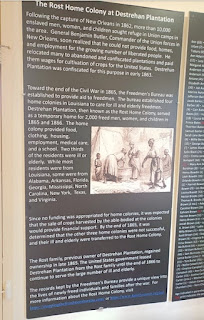“Make me a grave where’er you will, in a lowly plain, or a lofty hill, Make it among worth’s humblest graves, but not in a land where men are slaves.” Ellen Watkins Harper
In 1699 Pierre Le Moyne d’Iberville started a French settlement and the French began immediately importing people of African descent for enslavement. Slave trader Antoine Crozat was granted a royal license to populate the colony with Catholics and black slaves. Crozat failed and minister John Law was allowed to bring into the Louisiana Territory 3,000 slaves between 1717 and 1727.
Impoverished German colonists settled along what was to become known as the German Coast in 1721. They were part of the group headed by John Law and the Company of the Indies. Immediately a need for additional labor was recognized and in 1724 a letter was sent to the French king imploring him for “Negro slaves.” The colonist promised to feed the slaves well thereby expanding their own ability to cultivate products for export. The importation of these slaves allowed small farms to develop into large plantations. Two of the prized crops were indigo and sugar, both labor intensive.
Plantation owners lived in constant fear of slave revolts and on January 8–10, 1811, the largest slave insurrection in the country, 500 enslaved men, took place over 3-days in St. Charles and St. John parishes on the east side of the river. The leader was a 31-year-old slave driver, Charles Deslonde, from Ory Farm. The plan was to gather male slaves while marching to New Orleans to have the 67% black population join them in their fight as then commandeer the arsenal. They burned plantations on their route to shouts of, “freedom or death."
They were eventually stopped by the local militia. Some men escaped to the swamp, some were caught and tried and it is believed 66 slaves were killed. Trials and executions of 16 leaders were held in New Orleans and at Destrehan Plantation. The executed were hanged, their heads placed on poles and strung out along the river. Deslonde was executed on 15 January. His corpse was shot, dismembered, mutilated and displayed publicly.
It is believed this large revolt was purposely not well publicized in order not to frighten the local inhabitants. Only now is the story being shared via THE 1811 SLAVE REVOLT TRAIL. This 10-mile driving trail leads you to all the significant sites of the revolt. It was inaugurated in 2011, 200-years after the event.
The trail begins at the Kid Ory Historic House, site of the first attack, that of the slaves on plantation owner Manuel Andry and his son. The attack resulted in the son’s death.
The Ory House’s second claim to fame is that it was the birthplace of Edward “Kid” Ory on December 25, 1886. It holds the largest Kid Ory archive in the world. Ory was a composer, bandleader and renowned jazz musician. Two of his personal trombones are on display, as well as photographs and handwritten 1920s manuscripts from Louis Armstrong and Jelly Roll Morton. The house is one of the oldest buildings in St. John’s Parish and at the time of the revolt was known as The Woodland Plantation. It is a 1790’s raised French Creole-style home. 1811kidoryhistorichouse.com
Destrehan, a 1787 mansion, was built by Charles Paquet, a mulatto, then enslaved, carpenter along with 6 additional slaves. It features three distinctive architectural styles and boasts 2-stories and 3 galleries. Partial payment is listed as one Negro and a cow. It should be noted that in 1808 Paquet was fined $124 for In June 1808 “free Negro” Charles Paquet was fined $124 for hiding two runaways. The fact he still purchased his freedom and was allowed to work adds substantially to the story.
In 1865 the plantation was seized by the US Government and became the Rost Colony, a branch of the Freedman’s Bureau. The house eventually fell into disrepair and is believed to have been saved, in part, by treasure hunters seeking gold supposedly left by slave traders Jim Bowie and Jean Lafitte.
Destrehan is the final stop on the trail. Tours are a holistic experience, recounting the 1811 Slave Revolt. Much of the story is told through artworks and buildings. An 1811 Slave Revolt Museum is housed in a separate structure and relates the story in detail.
The plantation has been the setting for scenes in movies such as “12 Years a Slave” and “Interview with a Vampire.”
Whitney Plantation opened in St. James Parish in 2016. It is the sole plantation in the country dedicated to telling the story through the slave experience. Originally, Habitation Heidel, it was purchased in 1752 to cultivate indigo with the labor of 20 slaves. It was converted to a sugar plantation circa 1800. Eventually Azelie became owner and her business ability grew the plantation to more than 100 slaves and 400,000 lbs. of sugar yearly.
Self-guided tours include restored slave cabins, an overseer’s house, a church and several
Scenes from “Django” were filmed here.



















No comments:
Post a Comment